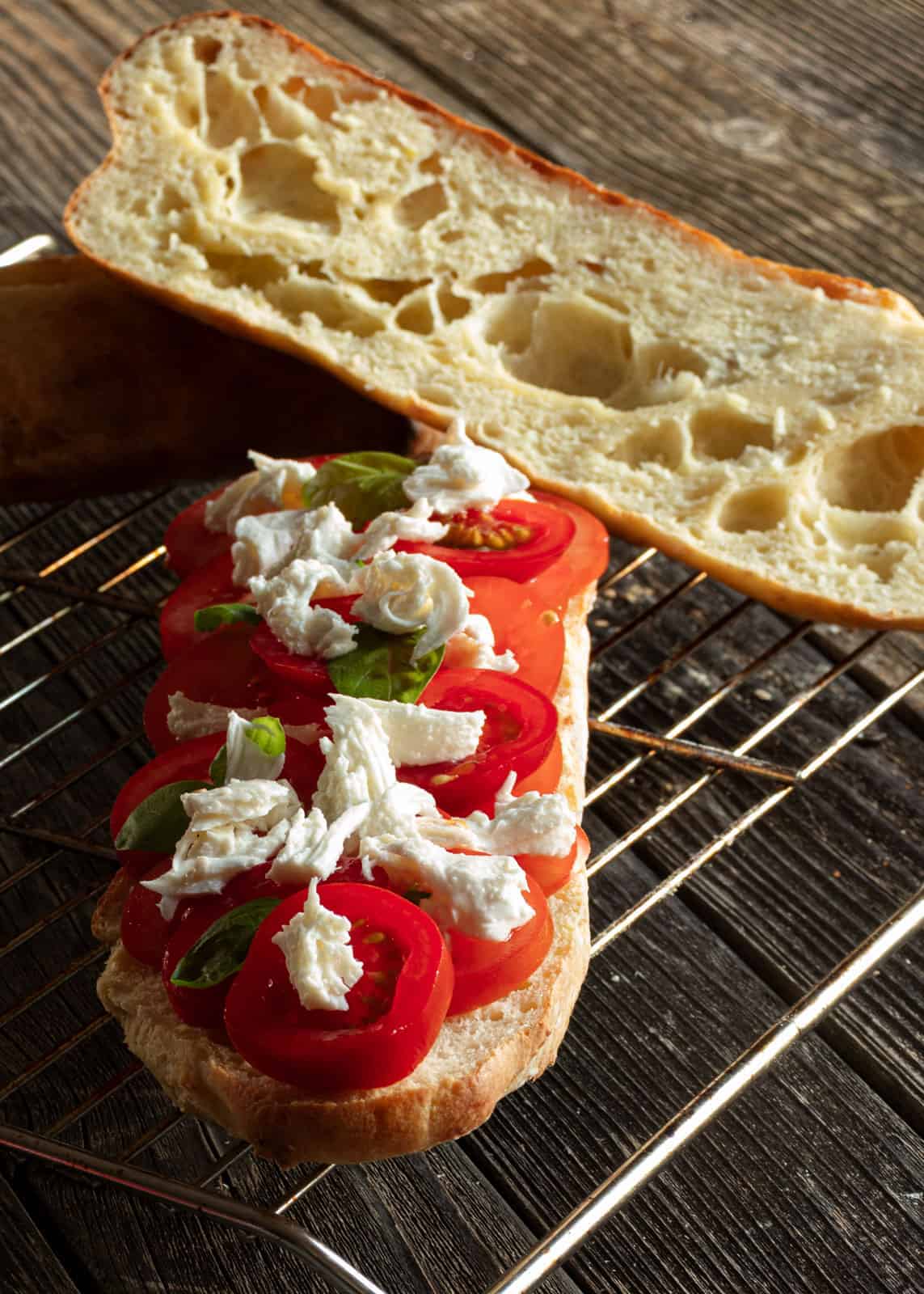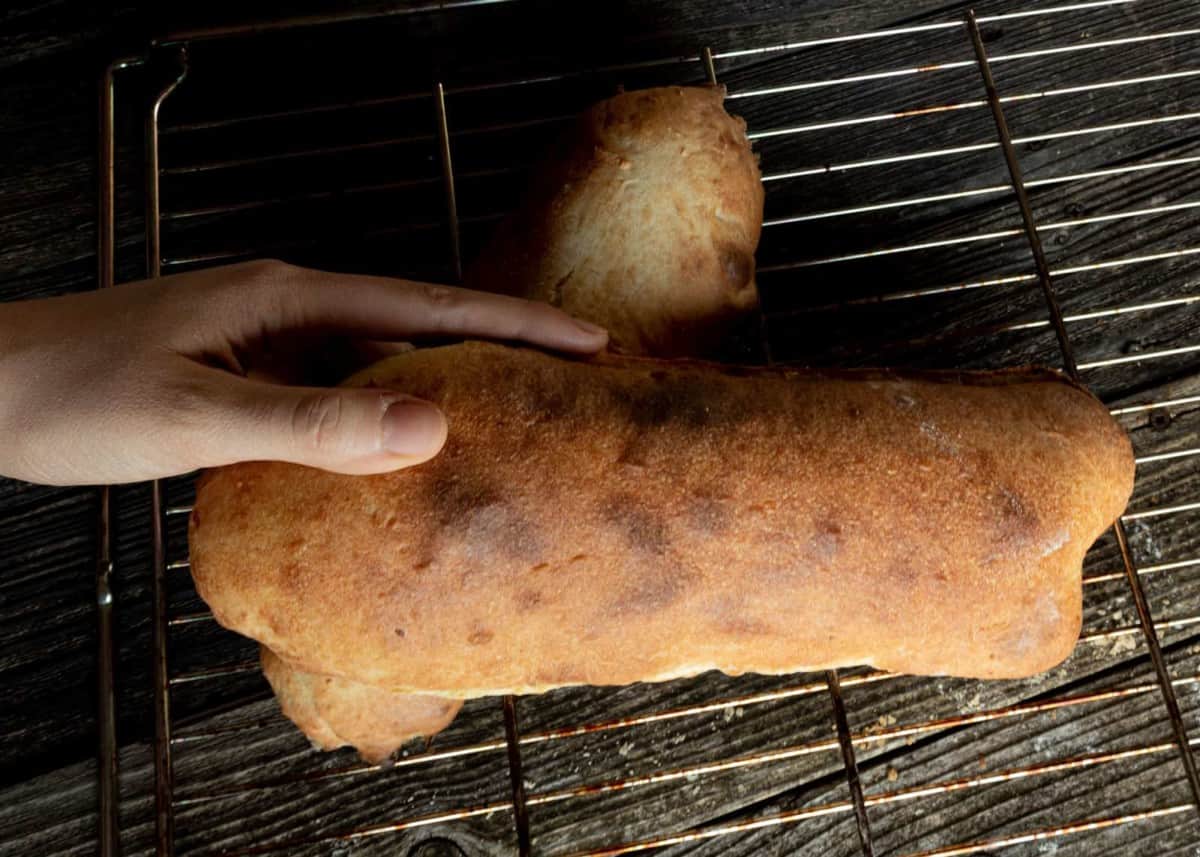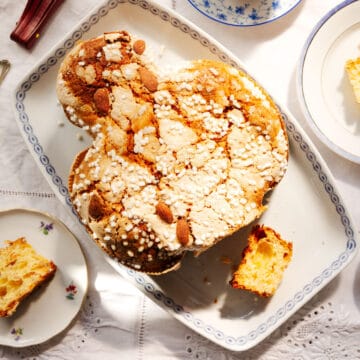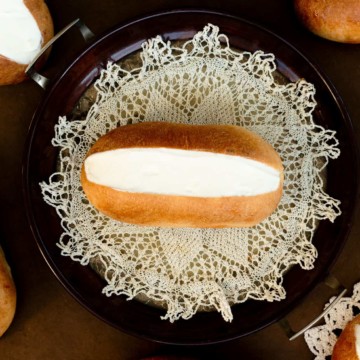
Paposcia is the name of the typical durum wheat bread from Apulia. Although it is baked like pizza or focaccia for a short time in a wood-fired oven, it is prepared like bread with sourdough. And because of this, the flat breadsticks are also called panfocaccia (bread focaccia). Nobody knows what it is exactly. But that doesn't matter, the main thing is that it tastes good!
The possible origins of paposcia
This bread has been known in Apulia, especially in Gargano, since the 16th century. Like everywhere in the region, bread was baked in ovens fired with beech wood. This gave the bread an unmistakable aroma, which many bakers still value today. Of course, the old ovens had no temperature display. So small pieces of dough were pushed in to check the heat. After all, the bread, normally weighing two to five kilos, should not be ruined. Soon the ideal time was found: when the small rolls of dough were fully baked in about four minutes, the oven had the right temperature for the large loaves. And the test rolls caused a sensation.

Colourful streetfood
The bread loaves have become the most popular street food in Gargano and in all of Apulia. You can add whatever you like to suit your tastes. You can buy them already filled or topped, in the bakery, in the pizzeria or at street stalls: popular variations are, for example, with tomatoes and burrata or with cacioricotta (a ripened ricotta) and rocket salad. I like my paposcia with a little olive oil and a touch of sea salt. Originally made from durum wheat flour, paposce can now also be found made from soft wheat. The potato in the dough provides extra starch.
📖 Recipe

Paposcia. The Apulian sourdough bread
Ingredients
- 300 g durum wheat flour
- 200 ml water
- 100 g potatoes, boiled and pureed
- 75 g licoli, sour dough
- 35 ml olive oil
- 6 g salt
Instructions
11:30am
- Mix flour and water and allow to rest for 30 minutes.
midday to 5pm
- Gradually add remaining ingredients as listed. Knead dough until it separates from the walls of the bowl. Transfer dough to work surface. Fold bread and shape into a bundle. Cover dough and allow to rest for 5 hours. Fold every 30 minutes; this will make the dough nice and fluffy afterwards.
5pm
- Put the dough in the refrigerator, cover and allow to rise overnight.
9am
- Remove dough from refrigerator and allow to rest at room temperature for 30 minutes.
9:30am
- Separate dough into pieces weighing 100 g and roll them into sticks (approx. 10x20 cm), flatten slightly. Leave to rise for one hour at room temperature. Pre-heat oven to very hot.
10:30am
- Bake paposce at 220 ° C. This only takes about 5 minutes. To check if they are fully baked, I use a roasting thermometer. Just stick it in one of the buns. When it reaches an internal temperature of 96° C, the bread is perfect.
Notes
Nutrition
Tip: Preparing sourdough
If you buy liquid sour dough in a shop, you can prepare it in this way: Mix 50 g liquid sour dough with 50 g durum wheat flour and 50 g water. Allow to rise at room temperature for 3-4 hours. Alternatively, leave to rise for 1½ hours at room temperature and then overnight at 4° C in the fridge. Licoli, by the way, is actually not a real word, it being the abbreviation of lievito in coltura liquida.
Buon appetito!




Leave a Reply